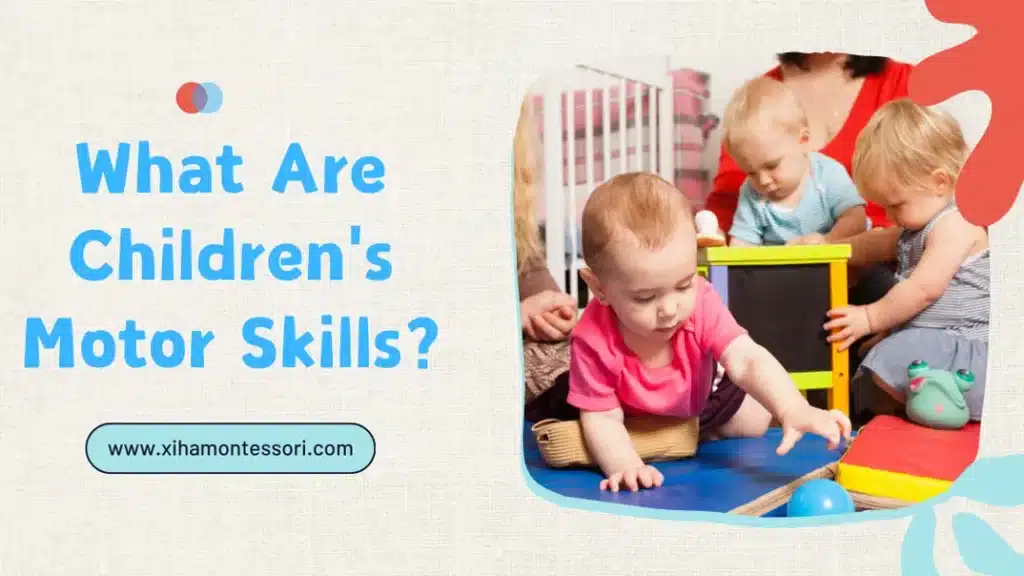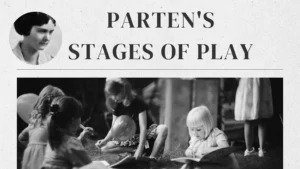You’ve probably heard “motor skills” often as a parent or educator. But what exactly does it mean, and why is it important to children’s development? Not only do motor skills enable children to perform everyday tasks effectively, but they also play an important role in cognitive development and social interaction. In this article, we’ll look in-depth at motor skills, breaking down their importance and types and how we can help children develop them effectively.
Motor skills are the ability to control and coordinate the muscles in the body, enabling children to perform various physical tasks. These skills can be divided into two categories: gross motor skills and fine motor skills. Gross motor skills involve larger muscle groups that are responsible for activities such as running, jumping and climbing. On the other hand, fine motor skills involve smaller muscle groups and are necessary for tasks such as writing, tying shoes, and using utensils.
Parents and caregivers can provide appropriate support and activities to enhance their child’s motor skills by understanding how motor skills develop. Research different types of motor skills, their impact on child development, and practical strategies to support these skills. So whether your child is exploring the playground, learning to ride a bike, or drawing with a pencil, understanding their motor skills is critical.
Types of Motor Skills
Motor skills fall into two categories: fine motor skills and gross motor skills.
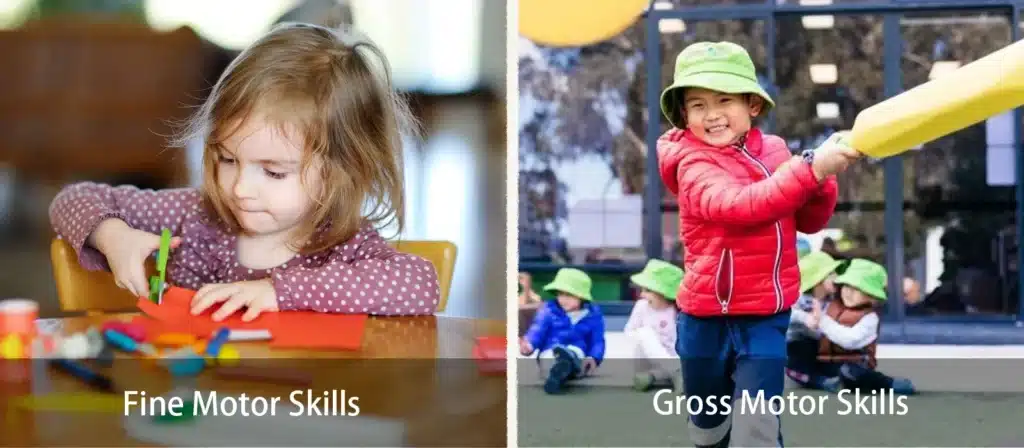
What Are Fine Motor Skills?
Fine motor skills involve the smaller muscles in the hands and fingers. These skills are necessary for tasks that require precision, such as writing, buttoning clothes, and using utensils. Fine motor skills are crucial for academic success and daily self-care.
Fine motor skills examples include:
- Writing and Drawing
- Cutting with Scissors
- Buttoning Shirts or Pants
- Zipping Coats or Bags
- Tying Shoelaces
- Eating with a Fork or Spoon
- Picking Up Small Items
- Playing Musical Instruments
- Sewing or Knitting
- Twisting Lids
Why Are Fine Motor Skills Important?
Fine motor skills play a pivotal role in:
- Academic Achievement: Skills like writing, drawing, and cutting with scissors are essential for school success.
- Self-Care: Tasks such as dressing, eating, and hygiene require fine motor precision.
- Cognitive Development: Engaging in activities that develop fine motor skills supports cognitive processes, including problem-solving and planning.
What Are Gross Motor Skills?
Gross motor skills involve the large arms, legs, and torso muscles. These skills are crucial for major movements like walking, running, jumping, and maintaining balance. They form the foundation for daily activities and are often the focus of physical education in early childhood.
Gross motor skills examples include:
- Crawling
- Rolling
- Walking
- Running
- Jumping
- Climbing Stairs
- Standing on One Foot
- Throwing and Catching
- Kicking
- Riding a Bicycle
Why Are Gross Motor Skills Important?
Gross motor skills are essential for several reasons:
- Physical Health: Regular physical activity helps maintain a healthy weight and strengthens muscles and bones.
- Coordination and Balance: Developing these skills improves a child’s ability to coordinate their movements and maintain balance.
- Confidence and Independence: Mastery of gross motor skills boosts a child’s confidence and promotes independence in daily activities.
Fine Motor Skills vs. Gross Motor Skills
| Aspect | Fine Motor Skills | Gross Motor Skills |
| Definition | Skills involving small muscles for precise tasks. | Skills involving large muscles for movement. |
| Examples | Writing, buttoning shirts, using scissors, drawing. | Running, jumping, climbing, throwing. |
| Muscles Involved | Small muscles in hands, fingers, and wrists. | Large muscles in arms, legs, and torso. |
| Age Development | Develops as children refine their hand-eye coordination. | Develops earlier as children learn to move and balance. |
| Skills Focus | Coordination, dexterity, and control. | Balance, strength, and coordination. |
| Activities | Puzzles, playing with small objects, drawing. | Walking, cycling, swimming, playing sports. |
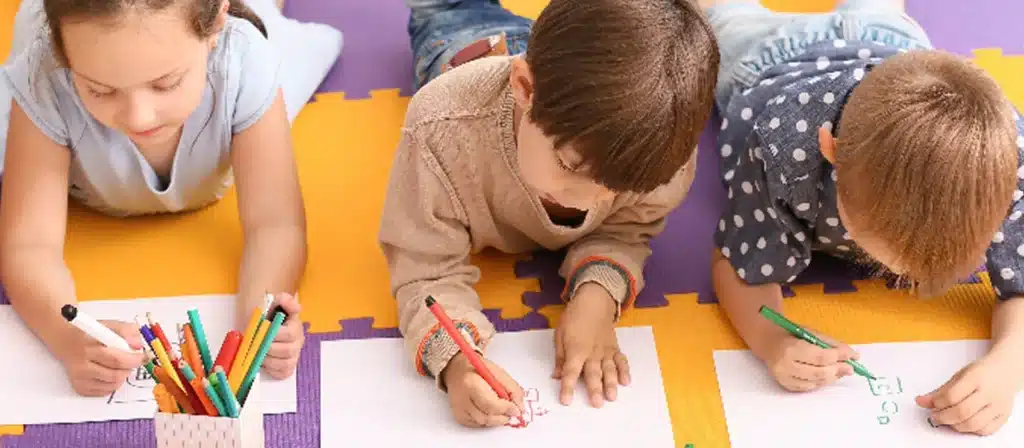
Fine Motor Skills Milestones
Fine motor skills involve the coordination of small muscles, particularly in the hands and fingers. These skills are essential for writing, buttoning clothes, and using utensils. Here’s a breakdown of how these skills typically develop in children:
0 to 3 Months
- Grasping objects reflexively.
- Wave your arms around.
- Watching their hands move.
- Tracking the movements of people in their line of sight.
3 to 6 Months
- Reaching for and holding toys.
- Covering their mouth with their hands.
- Holding hands.
- Transferring objects from one hand to the other.
- Holds toys with both hands.
- Noticing objects a few feet away.
- Supports body with arms while lying on back.
- Can open and close hands.
6 to 9 Months
- Passing objects from one hand to the other.
- Moving objects with fingers.
- Putting objects in mouth.
- Transferring objects from one hand to the other.
- He keeps his hands open frequently.
- Picks up small foods.
- He begins to grasp and hold objects with their thumb.
- Can hold a bottle independently.
9 to 12 Months
- Pincer grasp development, pointing.
- Turn the pages of a book.
- Eating finger foods by themselves.
- Putting objects into containers.
- Prefer to use one hand.
- Holds two small objects in one hand.
12 to 18 Months
- Stacking blocks.
- Scribbling with crayons.
- Scooping with a spoon.
- Clapping.
- Waving goodbye.
- Tapping objects with both hands.
- Isolating the index finger.
- Taking off socks.
- Pointing with separate fingers.
18 Months to 2 Years
- Turning pages in a book.
- Hold the crayon with your fingertips.
- Build a tower of three to four blocks.
- Open packages and containers.
- Can doodle.
- Holding a cup to drink without spilling too much.
2 to 3 Years
- Stringing beads.
- Beginning to dress themselves.
- Turning door knobs.
- Zipper and unzip the door.
- Draw a circle after seeing an example.
- Buttoning and unbuttoning.
- Can cut with scissors.
- Drawing crossed lines.
- Unscrewing or tightening the lid.
3 to 4 Years
- Drawing simple shapes.
- Dressing and undressing independently.
- Using a fork correctly.
- Pouring water from a small pitcher.
- Drawing circles and squares.
- Stringing beads.
4 to 5 Years
- Completes 8 to 12-piece puzzles.
- Writing with the dominant hand.
- Cut well with scissors.
- Writes letters and their names.
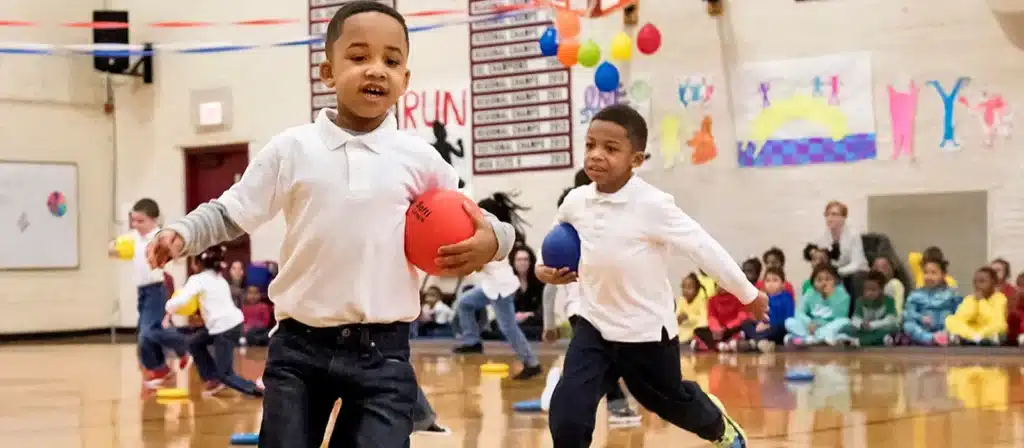
Gross Motor Skills Development
Gross motor skills involve the coordination of large muscles in the body and are essential for movements such as crawling, walking, and jumping. Here’s a breakdown of how these skills typically develop in children:
0 to 3 Months
- Lifting head while on the stomach.
- Can kick arms and legs.
- Turns head from side to side while lying on the back.
3 to 6 Months
- Rolling over.
- Sitting with support.
- Keep head in line with body while seated for support.
- Reaches for objects.
6 to 9 Months
- Sitting without support.
- Starting to crawl.
9 to 12 Months
- Pulling up to stand.
- Cruising along furniture.
- Crawls on hands and knees.
- Can walk holding one or both hands.
1 to 2 years
- Walking independently.
- Climbing stairs with assistance.
- Running.
- Kicking a ball.
- Sits in a small chair.
- Pick up and throw objects.
2 to 3 Years
- Jumping with both feet.
- Walk up and down stairs with support.
- Climb up and down furniture without support.
- Can walk and run fairly easily.
- Can kick a ball with both feet.
3 to 4 Years
- Hopping on one foot.
- Catching a ball.
- Riding a tricycle.
- Going up and down stairs with alternating feet.
4 to 5 Years
- Skipping.
- Balancing on one foot for a longer period.
- Walking the balance beam.
- Using playground equipment independently.
- Can ride a bicycle (with assistive wheels).
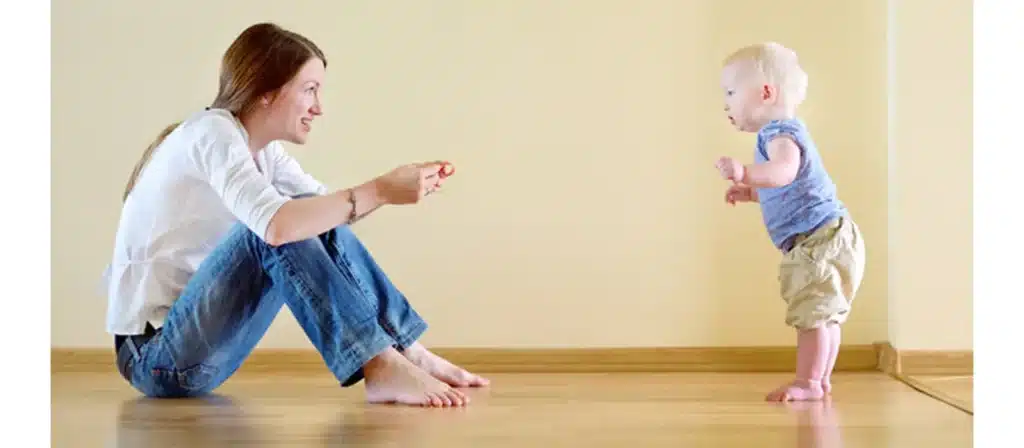
Everyday activities for developing motor skills
Below is a breakdown of age-appropriate activities that can help promote motor skill development at various stages, from 0 to 5 years old. These simple yet effective activities will support children as they grow, explore, and gain independence.
0-6 months
- Tummy Time: Strengthens neck, shoulders, and arm muscles, helping babies develop head control and coordination.
- Reaching for Toys: Encourages reaching, grasping, and hand-eye coordination.
- Leg Kicks: Stimulates leg movement and strengthens leg muscles.
- Gentle Rolling: Encourages turning and coordination between the body and limbs.
6-12 months
- Crawling: Develops coordination, balance, and strengthens muscles in the arms, legs, and core.
- Clapping Hands: Builds hand-eye coordination and motor control.
- Grasping and Holding Objects: Encourages fine motor skills and dexterity.
- Sitting Up and Bouncing: Strengthens core muscles and improves balance.
1-2 years
- Walking: Strengthens leg muscles and improves balance and coordination.
- Stacking Blocks: Encourages hand-eye coordination and fine motor skills.
- Throwing Balls: Helps develop arm strength and hand-eye coordination.
- Dancing or Bouncing to Music: Promotes rhythm, coordination, and balance.
2-3 years
- Climbing Stairs: Improves leg strength and coordination.
- Drawing or Scribbling: Develops fine motor control and hand-eye coordination.
- Kicking Balls: Strengthens leg muscles and coordination.
- Using Simple Tools (e.g., spoons or forks): Improves hand-eye coordination and fine motor skills.
3-4 years
- Running and Jumping: Develops strength, balance, and coordination.
- Building with Blocks or Toys: Enhances fine motor skills and problem-solving abilities.
- Riding a Tricycle: Strengthens leg muscles and improves balance.
- Simple Puzzles: Encourages hand-eye coordination and cognitive development.
4-5 years
- Cutting with Scissors: Builds fine motor control and hand strength.
- Hopscotch or Jump Rope: Enhances balance, coordination, and strength.
- Playing with Playdough: Develops finger strength and dexterity.
- Team Sports or Group Games: Encourages cooperation, balance, and coordination in social settings.
These activities can help children at each stage develop important motor skills while also having fun! To learn more about developing motor skills and explore detailed activities, check out our comprehensive guide on motor skills development.
What is Motor Skill Delay?
Motor skill delay refers to the slower development of a child’s ability to perform tasks involving fine and gross motor skills. Children with motor skill delay may struggle with tasks appropriate for their age, impacting their daily life, learning, and play.
Motor skill delay can be worrisome for parents, but knowing the signs and seeking early intervention can significantly affect a child’s progress and confidence.
Causes of Delayed Motor Skills
Motor skill delays can stem from various factors, including genetic, environmental, and medical conditions. Understanding these causes can help identify and address the specific needs of children experiencing these delays. Here are some common causes:
- Genetic Factors
- Premature Birth
- Neurological Disorders
- Environmental Factors
- Medical Conditions
- Sensory Processing Issues
- Physical Disabilities
- Lack of Practice
- Emotional and Psychological Factors
- Nutritional Deficiencies
Signs of Fine Motor Delay
Fine motor skills are essential for many everyday activities. Here are some signs that may indicate a delay in fine motor skills:
- Difficulty Grasping Objects: A child with fine motor delay may struggle to properly hold small objects or utensils. This can be seen when they have trouble using crayons, pencils, or cutlery.
- Challenges with Self-Care Tasks: Difficulty performing tasks like buttoning, zipping, or tying shoelaces can indicate a fine motor delay.
- Poor Hand-Eye Coordination: Children with acceptable motor delays often have difficulty coordinating their hand movements with what they see. This can make activities like drawing or playing with building blocks challenging.
- Avoiding Activities Involving Hands: If a child avoids or shows frustration with activities involving their hands, it might be due to a fine motor delay.
- Trouble with Writing and Drawing: Children with fine motor delays may struggle to draw shapes, write letters, or color within the lines. Their handwriting may be unusually large or illegible.
Signs of Gross Motor Delay
Gross motor skills involve larger muscle groups and are crucial for physical activities. Signs of gross motor delay include:
- Delayed Walking or Running: Children with gross motor delays may start walking or running later than their peers. They might also have an unsteady gait or frequently fall.
- Difficulty with Balance and Coordination: Trouble maintaining balance or coordinating movements can indicate a gross motor delay. This includes challenges with activities like hopping, skipping, or riding a bike.
- Weak Muscle Tone: Children with gross motor delays might have noticeably weaker muscle tone. They may appear floppy or have difficulty sitting straight or holding their heads up.
- Avoidance of Physical Activities: A child might avoid games and activities that require physical exertion, such as playing sports or climbing playground equipment
- Poor Posture: The inability to maintain good posture while sitting or standing can indicate a gross motor delay. They may slouch or lean on objects for support.
Early detection of motor skill delays is crucial for providing timely interventions. Parents and caregivers should observe their child’s development closely and consult with healthcare professionals if they notice any signs of delay.
How to Address Motor Skill Delays?
If you suspect your child is experiencing a motor skill delay, it is essential to seek professional advice. Here are some steps you can take:
- Consult a Pediatrician: A pediatrician can evaluate your child’s development and recommend further assessments if necessary. They can refer you to specialists such as physical or occupational therapists for targeted support.
- Work with Therapists: Therapists can provide exercises and activities tailored to your child’s needs. Physical therapists focus on gross motor skills, while occupational therapists can help with fine motor skills.
- Encourage Play: Engage children in play activities that promote motor skills.
- Provide Tools and Resources: Use tools designed to aid motor skills development, such as grip-enhancing pencils for fine motor skills or balance boards for gross motor skills.
- Create a Supportive Environment: At home, create a supportive environment that encourages practicing and developing motor skills. Provide age-appropriate toys and activities that promote both gross and fine motor development.
- Be Patient and Supportive: Each child develops at their own pace. Be patient and provide plenty of encouragement and positive reinforcement. Celebrate their achievements, no matter how small, to boost their confidence and motivation.
Conclusion
By understanding and supporting children’s motor skills by providing opportunities for active play, fine motor practice, and early recognition of challenges, we can help children develop the skills they need to thrive. Our role as educators, parents and caregivers is to create an environment that nurtures and celebrates each child’s unique abilities.

